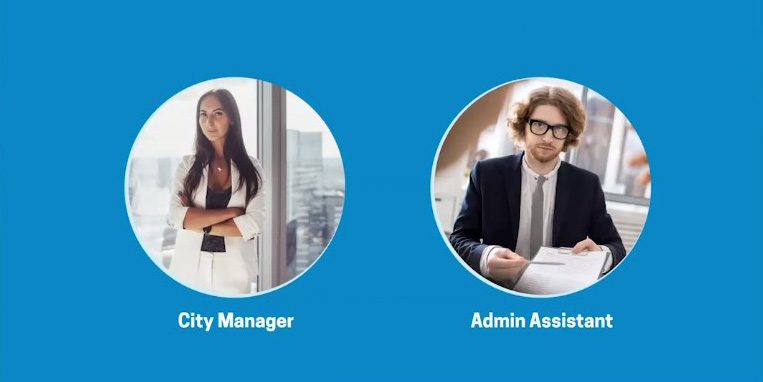Life after work – Success or bust!

So, you’re thinking about retirement! Sitting at your desk or standing by your machine, you picture waking up in the morning when you’re ready, lounging around the house with a cup of coffee and the paper, calling up friends for tennis or a game of golf, and playing cards in the evening. Ah, freedom at last! You’re no longer working. You’re no longer commuting. For the first time in a long time, you’re really enjoying life. Finally, you are retired!
When most people think about retirement, they imagine leaving a job they dislike, dropping out of the rat race, and turning their back on the pressures of employment. They often see retirement as a welcome change or an escape to something more peaceful and serene.
But, retiring is not only about giving up your job and relaxing. It’s about entering one of the most exciting and challenging stages of life. It can be a time to draw upon your personal and professional experience to open new doors of opportunity and education. It can be the time when you realize your potential and accomplish significant goals previously delayed by the responsibilities of working and raising a family.
Exploring Retirement Opportunities
The opportunities in retirement are endless; however, a successful retirement doesn’t come without its hurdles. In a recent survey, Boomer respondents were asked what is keeping them up at night. The following were reported:
- 37 percent report feeling financially insecure
- 39 percent don’t have a comprehensive vision of retirement
- 42 percent are not prepared for retirement
- 36 percent don’t know how to spend their time in life after work
- 84 percent don’t have a retirement coach or mentor
- 73 percent are not getting help from their financial advisor or employer, outside of money
There are many considerations attached to being successful in life after work, including living on a reduced income, creating a health and wellness strategy, examining relationships with family and friends, allocating personal time, establishing living arrangements, adopting and adapting to different social roles, and adjusting to the eventual death of a spouse, friends, and family members.
There are three phases to retirement: go-go years (up to age 75); slow-go years (76 to 85); and no-go years (86-plus). The go-go years includes checking things off the bucket list and being on the go with lots to do. The slow-go years involves less travel, shorter trips, and more time at home (cocooning). No-go centers around personal safety and comfort, where most interests are close to home, plus living on a tight budget.
Living Retirement’s Honeymoon Phase
During the first days, weeks, or maybe even months of retirement, there is often a blissful “honeymoon” feeling. Life is wonderful. No more boss. No more job. No worries or cares. Just time to sit around and do whatever crosses your mind. During this period, there is little motivation to plan for the future.
But as the honeymoon period winds down, a number of newly minted retirees report a feeling of disenchantment. Retirement no longer feels like an extended holiday. Time begins to weigh heavily on their shoulders. Playing golf five times a week begins to feel like a chore. Projects around the house lose their appeal and there is a “let-down” kind of feeling that causes retirees to ask the question, “Is this all there is?” Frustration and disappointment can mount as some retirees get caught in this vortex and are unable to get out.
In the quest for a successful retirement, you need to recognize its changing image. Retirement used to mean people were over the hill, sent out to pasture, or ready for the final sunset. In other words, retirees were starting the next chapter in life as non-productive, non-contributing members of society. Even today, many retirees have a pessimistic view of their non-working years. They see themselves already having made their contribution to their family and society and have mentally “hung up their skates.” They do not expect much from retirement and, unfortunately, that’s just what they get.
The good news is a quiet revolution has been taking place regarding the image of retirement and the role of the retiree. Retired people and those about to retire are beginning to understand that there is a secret to a successful retirement. It is to be positive, stay actively involved, and in control of their lives. Be an active participant in their neighbourhoods, clubs, and life in general. Today’s retirees are becoming energized and are actively pursuing their life goals. By adopting vitality and a zest for living, they are electing to be enthusiastic about the future and are determined to shape their destinies as much as possible.
Planning for a Successful Retirement
Successful retirees recognize the need to plan for happiness and productivity. They evaluate what’s important to them and construct actions to satisfy their needs and wants. By creating a vision of a realistic retirement and building an action plan to achieve it, they are proactively and energetically seeking results.
So now the choice is yours. Reserve your place in the rocking chair or grab the ring of life. Sit and wait for whatever comes along or tackle the challenges and opportunities. Be sedentary and without purpose or get involved and make a difference. Once again, the choice is yours.
Some people retire from successful careers to lead inactive lives focused around television programs or computer games. Many had no hobbies or outside interests. Few had friends other than “work buddies” and most were reluctant to join any organizations or social clubs. For some, they had relatively short lives after retiring and for others, they appeared unhappy and unfulfilled. Though tragic, it is not uncommon. But such unhappy endings can be prevented.
Action Plan
If you are around or between the ages of 45 and 65, it’s time to explore your future as a retired person.
1. Define retirement
Start by taking a few minutes to relax and visualize what the word “retirement” means to you. What is it about retirement that attracts, scares, or excites you?
2. Brainstorm retirement
Now take a few minutes to write out your retirement life. What are you doing? What are your accomplishments? Be as descriptive as possible. To help you, consider the following questions:
In retirement:
- What makes me happy?
- How much money do I have?
- How am I spending my time?
- Who is in my retirement picture?
- How is my health?
- How do I feel?
- How are my relationships (spouse or partner, children, other family members)?
3. Imagine retirement
Imagine yourself in one and two years after retiring. Does your mental picture change?
4. Visualize retirement
Visualize yourself at the end of your retirement when you’re 90, 95, or 100-plus. What are you most proud of? What have you done that brought happiness to you and others? What will you be remembered for?
5. Define a successful retirement
Think about the people you know who have made a success of their retirement. What do they do that you admire? Is it their family relationships, their energy and enthusiasm, or perhaps their sense of being? Take a moment and record your observations.
6. Define a challenging retirement
Think of those who are challenged by retirement. What are they doing or not doing that makes them, in your opinion, less successful in retirement? Is it the abnormal amount of time they spend watching television, their lack of adventure, or their sense of helplessness in an ever-changing world?
7. Record and share your retirement vision
Once you have created your vision, share it with your spouse or partner and several close friends. Explain to them in as much detail as possible what you’re doing in retirement (i.e., continuing in your profession or trade), the new activities you are attempting, who you have as a support system, where you want to be living, your health and diet, and all other aspects of who you are and where you want to be.
As you describe your vision, make note of what questions come to mind and those asked of you. Fill in the grey areas. Ask for suggestions on how you can achieve your goals. Brainstorm ideas and solutions. Make changes as necessary. At the end of this process, you should have a clear picture of your retirement life.
Retirement’s Anchor and Compass
It is true that the visualization process and drafting of a balanced retirement plan take time and effort, but it is very worthwhile. A well-thought-out vision acts as your anchor and your compass for direction and future decisions. MW
✯ Municipal World Insider and Executive Members: You might also be interested in Peter Cameron’s article: “Baby Boomer” business succession. Note that you can now access the complete collection of past articles (and more) from your membership dashboard.
Richard (Rick) Atkinson, President of RA Retirement Advisors, is an expert in holistic retirement planning. He is the author of bestsellers such as Don’t Just Retire – Live It, Love It!; Strategies for Retiring Right!; and Why Me? And No Gold Watch!
Related resource materials:


